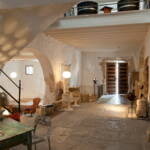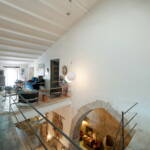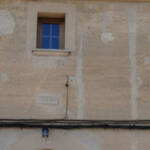
The adobe walls They are made by compacting layers of earth within a formwork. In addition to sharing the ecological qualities of the rest of the earth construction systems, rammed earth has the advantage of its material austerity since it does not require the inclusion of vegetable fibres and needs very little water to be able to be compacted properly. Many traditional buildings in Mallorca are made using the rammed earth technique. Can Monroig is an example of this. Although it is not built solely of rammed earth, the earth is the base material with which it is built. In recent decades, houses built of rammed earth have been restored using unsuitable materials such as Portland cement, which is too strong, not very flexible and not very breathable. In the long run, producing problems of humidity, condensation, deterioration of the original materials, cracks, unhealthy environments, etc.
Many traditional buildings in Mallorca are made using the rammed earth technique. Can Monroig is an example of this.
Contrary to popular belief, earthen constructions have an indefinite duration (the Alhambra of Granada It is made of adobe, only water leaks through the roof or from the foundations can damage it.
Good conservation of the building is essential. The materials used for its restoration are those closest to the original: earth, clay, lime. In Can Monroig the earth walls were chipped and plastered with lime mortar. To show the type of construction, on one of the side walls of the house the “bare” adobe was left exposed without any type of finish, so that the horizontal marks or the earth colour typical of this type of construction can be seen. Current rammed earth Nowadays, rammed earth is one of the proposals for modern and sustainable architecture due to its unrivalled thermal characteristics that facilitate heat retention in winter and insulation in summer, with the consequent energy savings.




































